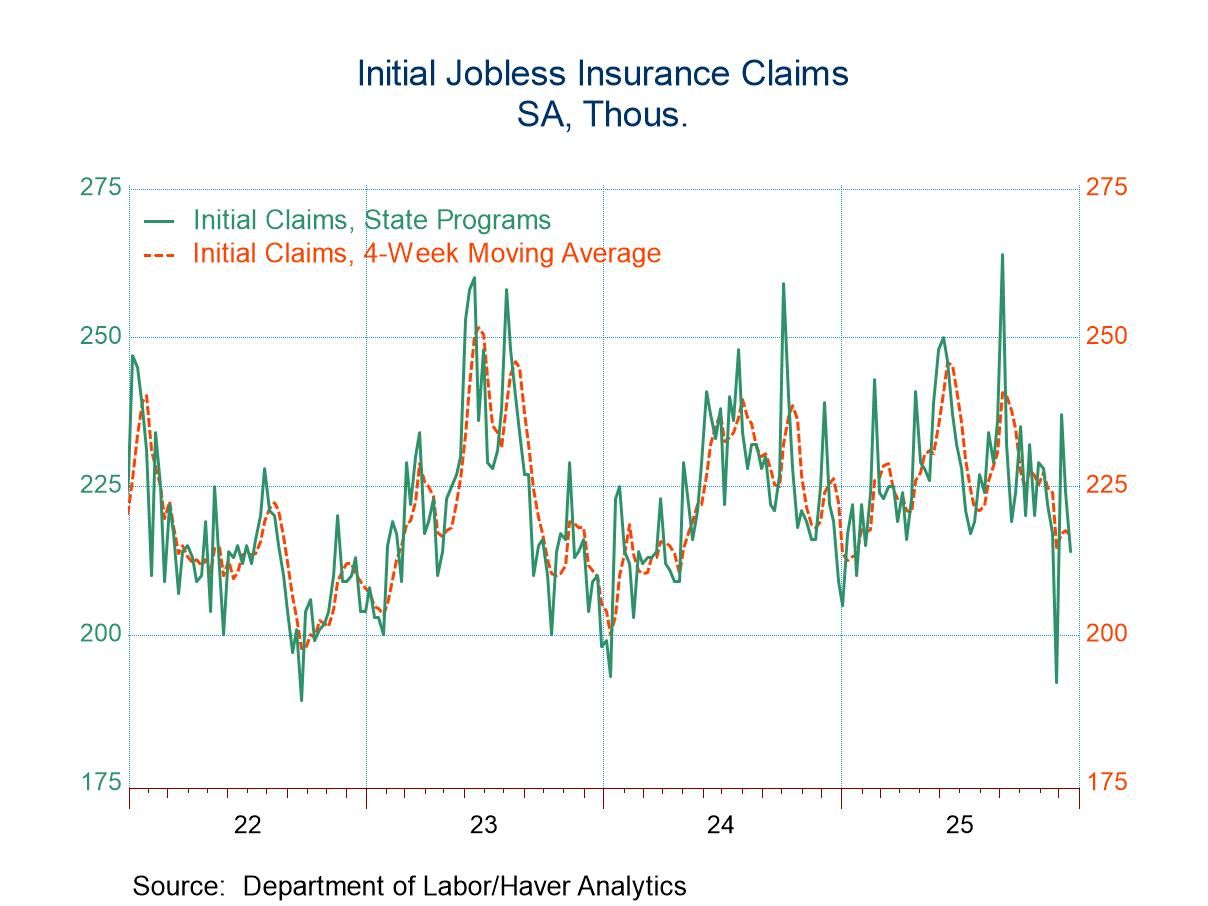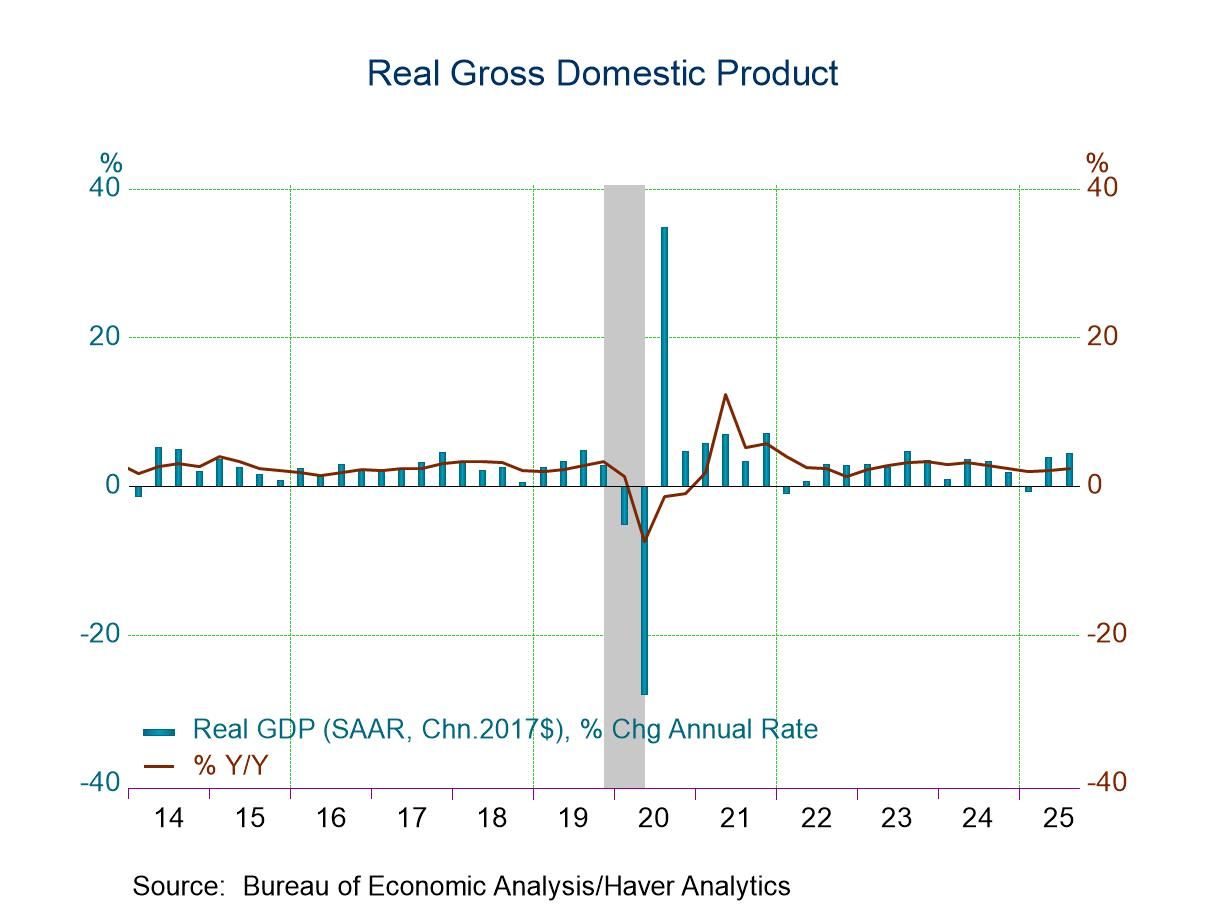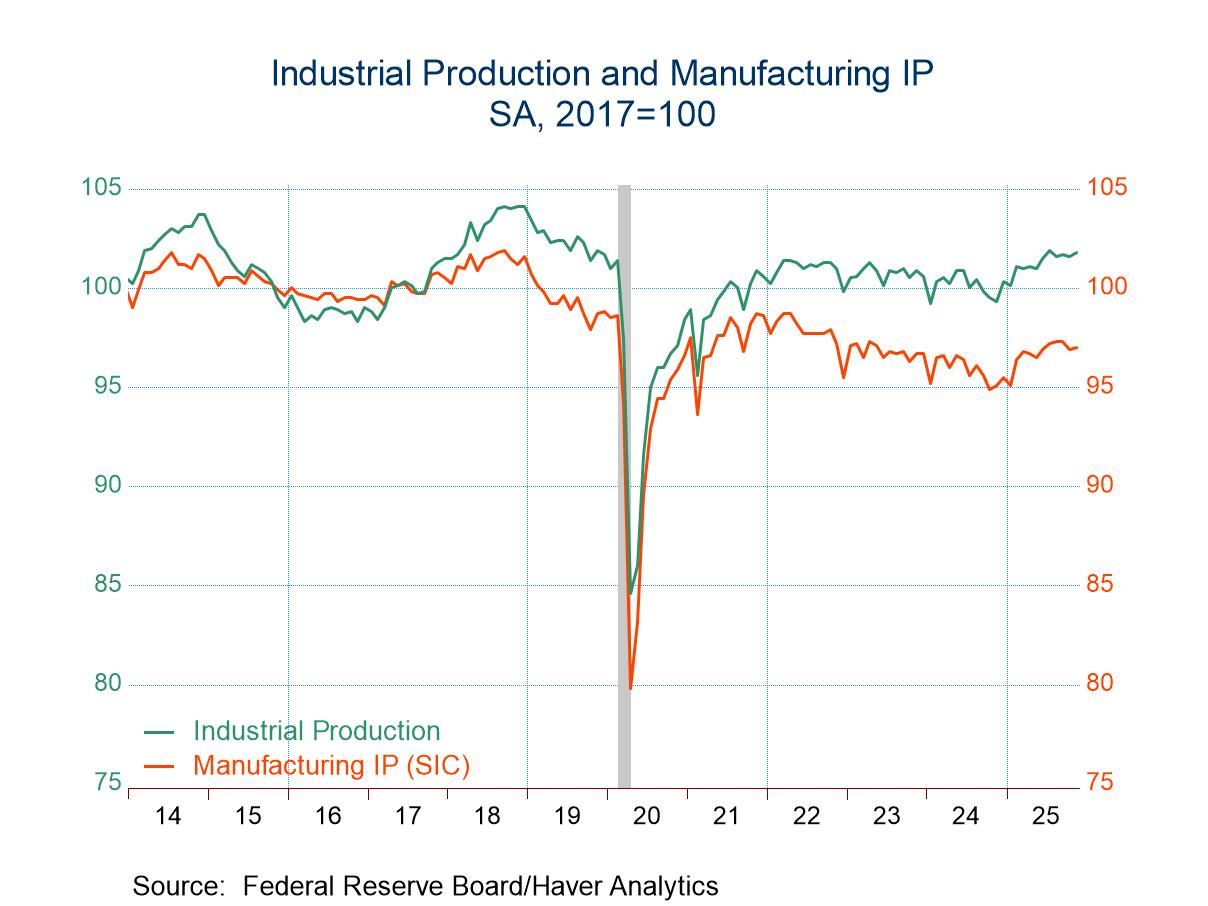 Global| Nov 03 2023
Global| Nov 03 2023Charts of the Week (Nov 3, 2023)
by:Andrew Cates
|in:Economy in Brief
Summary
Financial market sentiment has improved in recent days, partly thanks to the Fed’s decision this week to leave interest rates on hold. Although this decision was largely expected, recent data from the US and Europe have additionally revealed weaker-than-expected growth and inflation, bolstering the belief that a global tightening cycle may be near its end. In this week's charts, we examine the consensus on central banks' policy rates that emerged from the November survey of Blue Chip Financial Forecasts (see chart 1). Our focus then shifts to the United States, where we observe how tighter financial market conditions seem to be now steering the economy toward much weaker growth outcomes (see chart 2). With the BoJ also making headlines this week, we next analyse how Japan's significant yield differentials with the US are negatively affecting the value of the yen (chart 3). Our next stop is the Euro area, where we highlight this week’s encouraging news on the region's inflation front (chart 4). We then turn our attention to mutual fund flows in Asia, specifically examining how India, and to a lesser extent Vietnam, seem to be benefiting from some increased pessimism surrounding China. Lastly, amidst some escalation of geopolitical instability in the Middle East, we explore some indicators of credit card activity in Israel (see chart 6).
The consensus for policy rates The latest November survey of Blue Chip Financial Forecasts revealed a growing consensus that policy rates in most major economies are now at, or near, their peak. And looking at the spread between expectations for policy rates in 3 months’ time versus 12 months’ time, there is equally a growing consensus that easing cycles will have commenced by this time next year. As chart 1 below suggests, and relative to expectations in 3 months’ time, the Fed is expected to reduce interest rates by nearly 100 basis points in the year ahead. The ECB, BoE and BoC are not too far behind however, with their respective policy rates expected to be lowered by around 80-85bps.
Chart 1: Blue Chip Financial Forecasts: Expectations for policy rates in 12 months versus 3 months

US financial conditions One reason for why the Federal Reserve is believed to be close to concluding its tightening cycle relates to financial conditions. The Fed assesses that current financial market conditions are creating significant obstacles for U.S. economic growth. This is evident in chart 2 below, which illustrates the Fed's projections of the impact of financial conditions on growth, juxtaposed with the US ISM manufacturing index. The latter has slipped into a contractionary phase in recent months, shortly after the influence from financial conditions also shifted into more demanding territory.
Chart 2: US financial conditions and the manufacturing ISM index

The BoJ, JGBs and the yen The Bank of Japan's monetary policy challenges are very different. At this week's meeting, the Committee opted to treat the 1.0% upper limit on the 10-year JGB yield more as a "reference" point, effectively distancing itself even further from the previous Yield Curve Control policy. However, there were no signals of an impending move to normalize interest rates. This development, nevertheless, led to a further decline in the yen, as it could potentially widen the already significant yield disparities between Japan's JGBs and U.S. Treasuries. A weaker yen, on the other hand, might be interpreted as an indirect easing of Japan's monetary policy, particularly considering its probable impact on imported inflation.
Chart 3: The USD/JPY exchange rate versus US and Japan’s 10-year bond yields

Euro area inflation This week's inflation news from the euro area will likely be received positively by the ECB. Specifically, October's preliminary CPI data revealed a significant decrease in headline inflation, dropping to 2.9% y/y a previous 4.3%. Furthermore, the latest EC survey of business and consumer sentiment also suggested a relaxation of inflationary pressures. Underlying details from this survey indicate, for instance, that supply-side shortages are continuing to diminish, and now approaching more normal levels (see chart 4).
Chart 4: Euro area CPI inflation and EC survey’s indicators of equipment shortages

Emerging markets Turning to emerging markets, latest fund flow data from EPFR suggests that many investors have gradually rotated out of China over the past few years, amidst high uncertainty about the economic outlook. Specifically, Asia ex-Japan equity mutual funds saw their 3-month average allocations to China fall to about 30% in September, from 40.3% in October 2022. Meanwhile, average equity allocations to India have risen steadily, to about 15.4%, from just 8.3% in mid-2020. Allocations to Vietnam, while still relatively small, have climbed too, to 0.9%, from 0.7% earlier this year.
Chart 5: Equity mutual fund allocations in Asia

Israel’s economy Gauging the impact of the geopolitical instability in the Middle East on economic activity is not straightforward. Latest credit card spending data from the Bank of Israel nevertheless suggest a big impact on consumption and particularly in areas such as tourism (chart 6).
Chart 6: Credit card spending in Israel

Andrew Cates
AuthorMore in Author Profile »Andy Cates joined Haver Analytics as a Senior Economist in 2020. Andy has more than 25 years of experience forecasting the global economic outlook and in assessing the implications for policy settings and financial markets. He has held various senior positions in London in a number of Investment Banks including as Head of Developed Markets Economics at Nomura and as Chief Eurozone Economist at RBS. These followed a spell of 21 years as Senior International Economist at UBS, 5 of which were spent in Singapore. Prior to his time in financial services Andy was a UK economist at HM Treasury in London holding positions in the domestic forecasting and macroeconomic modelling units. He has a BA in Economics from the University of York and an MSc in Economics and Econometrics from the University of Southampton.






